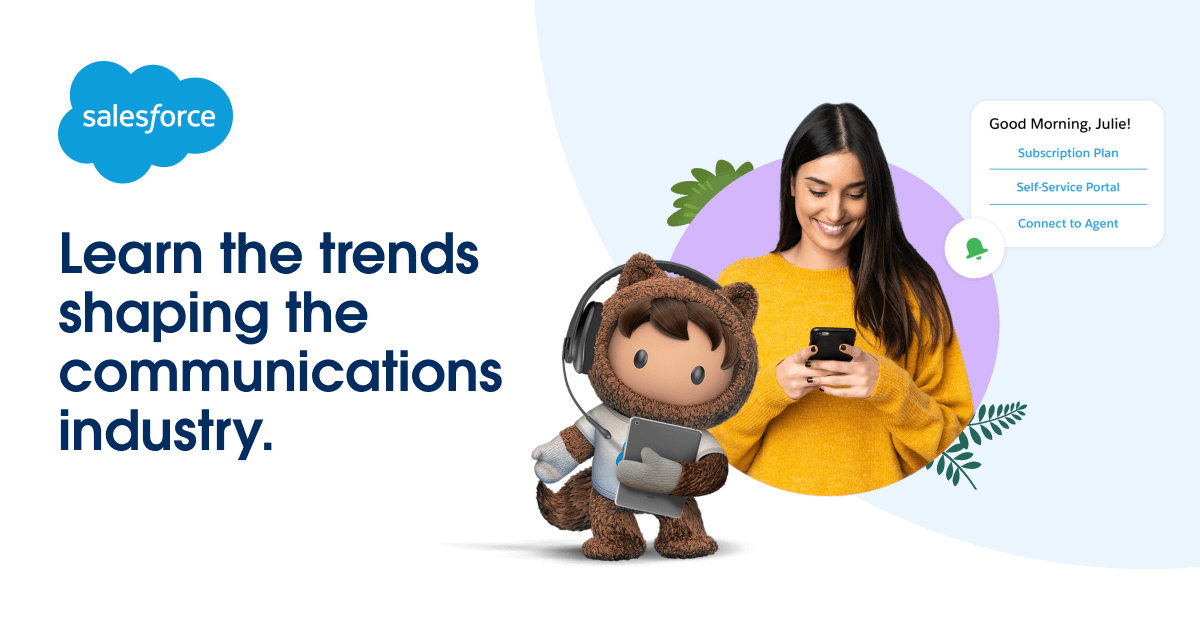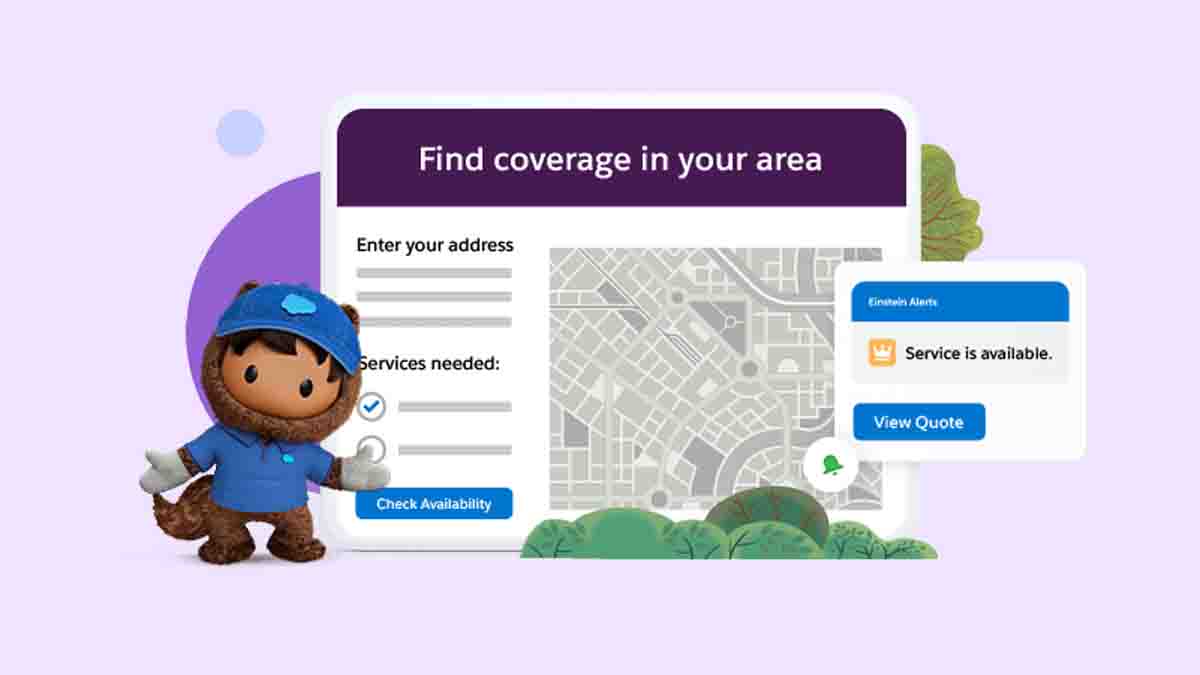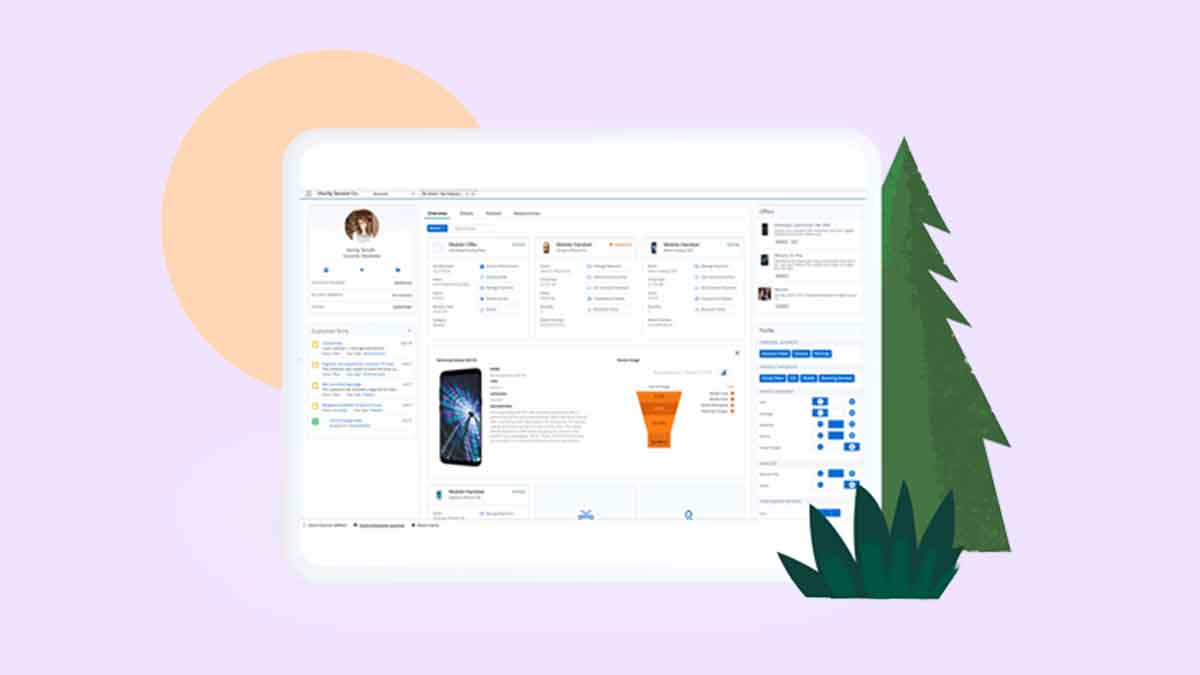The key to personalizing your telco? AI-powered customer service
Harness AI and automation to free teams from mundane tasks and deliver quality service.
Feb 23, 2023. 6 min read

The technology most communications companies (small and large) rely on for service is an inefficient mess of systems. Historically, according to Grote, most company resources have gone into building networks, not so much into streamlining all systems across the organization. This inefficiency is important to address, especially given the huge growth of customer expectations.
For most companies, focusing on building neworks left the service side of the business fragmented without a full view of the customers’ data from different parts of the business. Two things happen as a result: Customers get frustrated when service agents don’t recognize problems in a timely manner, and, second, service agents waste their time on manual tasks and “swivel-chairing.” This leads to higher costs and unhappy customers. It’s also time that could be better spent on higher-value work and strengthening customer relationships.
Attempting to optimize and customize each individual system costs companies money. Picking the best marketing solution, the best sales solution, the best technical solution, and stitching it all together into a customer service application is expensive and time-consuming. That’s true whether it’s building systems internally or buying a solution from the marketplace.
With a cloud-based solution built on a single platform, you can provide visibility to the data in all these systems for a 360-degree view of your customers. Now, you can set up automation and use AI (whether it’s generative to create assets such as content or respond to inquiries or predictive to identify patterns and predict outcomes) with your company's own trusted data that lets service teams work more efficiently while lowering your costs. It means less time spent on tedious tasks and more time spent on improving customer satisfaction and optimizing agents’ productivity.

Three Ways Service Automation and AI Increases Customer Loyalty
- Service team automation and AI uses artificial intelligence to assist agents with manual, time-consuming tasks to increase productivity and provide the flexibility to focus on personalized customer experience. This means giving agents the right tools to drive customer loyalty and engagement in every conversation. Tools like an efficient service agent dashboard where real time customer data and insights are easily accessible during customer interactions. Agents can lean on automated workflows to complete routine tasks faster and AI enhanced predictions to solve customers problems quicker or close upsell opportunities.

- Customer automation and AI involves business processes across all aspects of an organization, from simple no-touch, self-service actions to high-touch, complex incidents. It’s all about delivering the right level of service for every customer interaction to enable service teams to focus on what matters most: delivering service that your customers love.
No-touch interactions: Real-time data can fuel automation that personalizes self-service interactions such as automatically routing cases to the right department and suggesting relevant knowledge articles to address the customer’s issue.
Low-touch interactions: Deploys generative AI, such as chatbots, to close service cases faster or engage in higher level functions such as upselling. This empowers customers to self-serve with an intelligent journey.
- Process automation and AI is all about connecting your business systems so they’re sharing information seamlessly to optimize your processes. The goal is shifting as many interactions as possible to low touch or no touch.


Take a glimpse into the future of telecom
You can also use AI to personalize the experience. When customers log in, the company knows who they are, what type of issue they may be having and how to help, and what types of service or product upgrades they should be offered.
The second types of conversations are high-touch, such as when a customer is interested in the new iPhone. That’s a personalized conversation you want a service agent to have to optimize value, such as upselling a customer on a better device with more features, data, and storage.
AI is at work even during personal conversations, arming agents with recommended knowledge articles, for example, or next best actions when they’re engaging with a customer live. That reduces your average handle time and increases first-call resolution. You’re able to get through more calls and resolve them the first time versus having to revisit an issue.

Automation is also at play in the field. Say a new customer needs an in-home installation. Automation helps schedule the installation through a self-service portal, which also sends reminders to the customer about the appointment to prevent no-shows.
Once the technician is onsite, the system makes sure the technician has all the customer’s information via a field service mobile app, eliminating time wasted searching for relevant data. Depending on the job, the system also gives the technician a checklist of materials, tools and the right tech equipment to complete the job on the first trip, preventing costly return visits, and can generate follow-up service emails and messages, and any relevant sales messages.
Once a service job is completed, all relevant information is updated and visible through a single view of the customer.
Then, a technician can look at how similar orders in the past have been fulfilled, view any recent conversations pertaining to those orders and help resolve any issues. Based on historical data, generative AI can be utilized to recommend a list of installation equipment and even draft an email to the account executive with the installation status update.

Say a customer is streaming a soccer match and suddenly the internet goes down due to a regional outage. The customer’s first reaction usually is to call the provider. That means service agents are being inundated with calls.
Process automation ensures all the different systems, from the service agent to the technician and engineering teams, are up to speed on the problem. So, when someone calls about an outage, the service agent already knows about the issue and is armed with relevant information to share with the customer.
Better yet, when customers call, they hear an automated recording (drafted with help from generative AI) letting them know that technicians are aware of an issue in their area and when it will be resolved. This can also be accomplished if a customer logs into the website through, for example, a banner message. AI can also proactively detect a problem before a technician or customer even knows about it. Take, for example, a scenario where the communications lines to a grocery store are damaged during off hours, knocking out all of its communications systems.
AI can also proactively detect a problem before a technician or customer even knows about it. Take, for example, a scenario where a grocery store’s communications system is damaged during off hours.
The system can notify incident response or engineering teams after pinging the store’s router and not receiving a response, and dispatch teams to quickly fix the problem. This can happen before the store owner even knows there’s a problem. The owner would be proactively notified there is an outage, it’s being worked on, and will be resolved soon.
Slack is the interface that brings together various experts across different departments who would otherwise be working in silos and in different systems together into one centralized location to collaborate and quickly resolve the issue. When an incident is created — say, an internet outage — a Slack swarm can be created with all the relevant information and players, such as engineering, DevOps, service agents, and even marketing.

All of this makes speed and efficiency centerpieces to customer service. The data is a thread that ties it all together.
Data will always reside in different systems, with different sources coming in and out. It’s how the data is integrated and scaled that makes agents more productive and creates the greatest efficiencies and cost savings.
At Salesforce, we’ve spent years embedding state-of-the-art AI within business applications spanning sales, service, marketing, and commerce, and today, our Customer 360 platform is generating more than 200 billion AI-powered predictions per day.
That level of automation is critical in every aspect of business today — and especially in customer service.
More Resources

How T-Mobile has its customers crazy about its service

Deliver fast, flexible, and frictionless customer experiences












